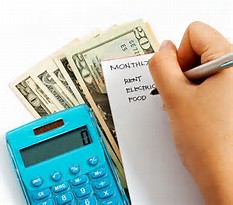by Dr. William “Marty” Martin
Reflect on the days when you had more than enough money to pay your bills. Now picture yourself just squeezing by to meet your financial obligations. Or imagine drowning in a sea of debt each and every week or month.  These three scenarios may relate to your home or your business.
These three scenarios may relate to your home or your business.
Cash may not be “king,” but knowing that you have enough to pay your bills and have money left over or set aside to pay for the emergencies gives you peace of mind—and also satisfies your creditors. There are three avoidable traps that we tend to fall into that can create cash flow problems:
Trap #1: Disappearing Money
Trap #2: Forgetting to Count
Trap #3: Procrastinating and Paying More Later
Disappearing Money
You know you deposited enough money in the bank to cover your bills and have some money left over. But you look up and you find that you are short of money again. What happened to that money? Where did it go? There are two simple tricks to fight disappearing money:
- Set aside a limit on how much money you will spend for a specific time period which could be a day, week or month
- Before you spend any money, ask yourself this question, “Do I really need or want this?” If the answer is “I don’t need it and really don’t want it,” walk away.
Forgetting to Count
All of us know how to count, yet it is a hassle and a pain to track our spending. One of the tools you can use to help manage your expenses is The Planning Center’s First Step Cash Management System, an online tool to plan and control your spending. It is a simple and effective way to keep an eye on expenditures, increase savings, and fund your important life goals. (Your TPC advisor can provide you with more details as well as access to the program.)
It is typically easier to track what you are spending if you use fewer ways to pay for things. With the many options to pay ranging from PayPal to cash, it becomes more complex not just to account but also to aggregate what you have spent across multiple credit cards, debit cards, e-payments, and savings/checking accounts.  Here are two simple tricks to remembering to count:
Here are two simple tricks to remembering to count:
- Consolidate your different ways of spending to no more than two for daily expenditures.
- Commit one day each week to adding it up all and give yourself permission to see this task as boring but necessary and tedious but helpful.
Procrastinating and Paying More Later
We are probably all a bit busier than we would like to be. This is a result of the demands that others place on us. There are the demands we voluntarily sign up for, and at times, our discomfort in saying “No” or even “Love to, but can’t.”
Putting off what you can do today nearly always has consequences. The payoff could be negative, such as forcing you to deal with something that you’d rather avoid. Alternatively, the payoff might be something positive that triggers the pleasure centers in your brain. Either way, procrastination operates in two time zones: today and tomorrow.
You may enjoy today but what will tomorrow yield based upon what you enjoyed today? For instance, you know you need a new roof soon, but you spend your money on more delightful pleasures such as fancy meals, dazzling entertainment, gifts to loved ones, or a blowout vacation. The roof now needs to be replaced sooner than you anticipated and you’ve spent your “roof money.” You don’t have a reserve fund, which means you have to pay interest to get the money because of your anorexic cash flow.
Here are two simple tricks to procrastinating less and saving more for today:
First, take out a piece of paper and write down “The Two Time Zones of Procrastination: Today and Tomorrow.” After writing this message down, be sure to display it in a prominent place or carry it around with you until you INTERNALIZE this message. The key is to ask yourself, “By saying yes or no today, what will I have to pay tomorrow?”
Avoid interest, especially non-deductible interest, if paying over time will place you in a situation where you are feeling the grip of constrained cash flow. Cash may not be king but it is clear that many of us experience emotions and interact with others in specific ways based upon whether we believe we can meet our daily, weekly, monthly, or annual obligations.
Long-Term View: Make Subtraction Your Friend
The long-term view is based upon the high-level math concept of subtraction. First, accurately identity your cash inflows which may come from a job, consulting, tax refunds, rents, royalties or numerous other sources.
Second, and this may be a bit more challenging, calculate your cash outflows. These can be fixed expenditures such as rent, car payments, and other loans. Or, they can be discretionary spending that is subject to impulsivity like daily transportation, meals, and clothing.
Do you need short-term and long-term solutions to manage your cash flow? Do you want to get off the emotional roller coaster ride that is associated with being short of funds each week or month? If this blog resonated with you in some way, be sure to explore the wealth of tools available that can help ensure that you have more than enough to cover your expenses each month.
 Marty Martin, PsyD, is a Psychologist in the Chicago office of The Planning Center, a fee-only financial planning and wealth management firm.
Marty Martin, PsyD, is a Psychologist in the Chicago office of The Planning Center, a fee-only financial planning and wealth management firm.
Email him at: info@theplanningcenter.com.






